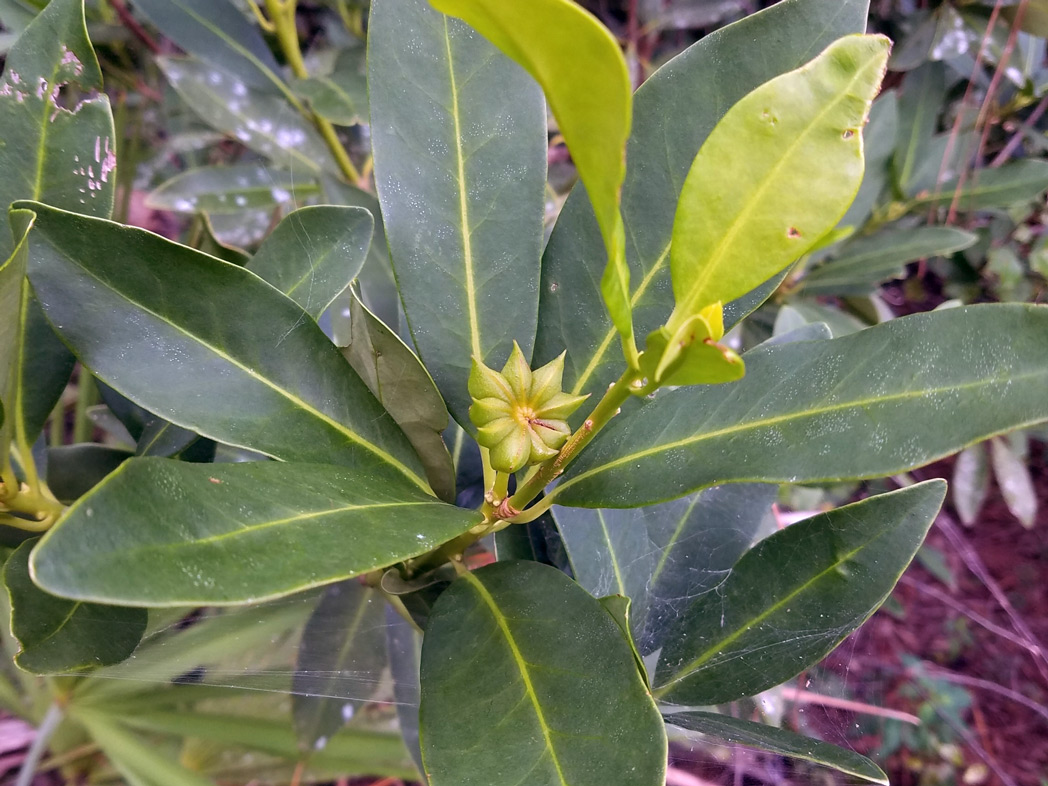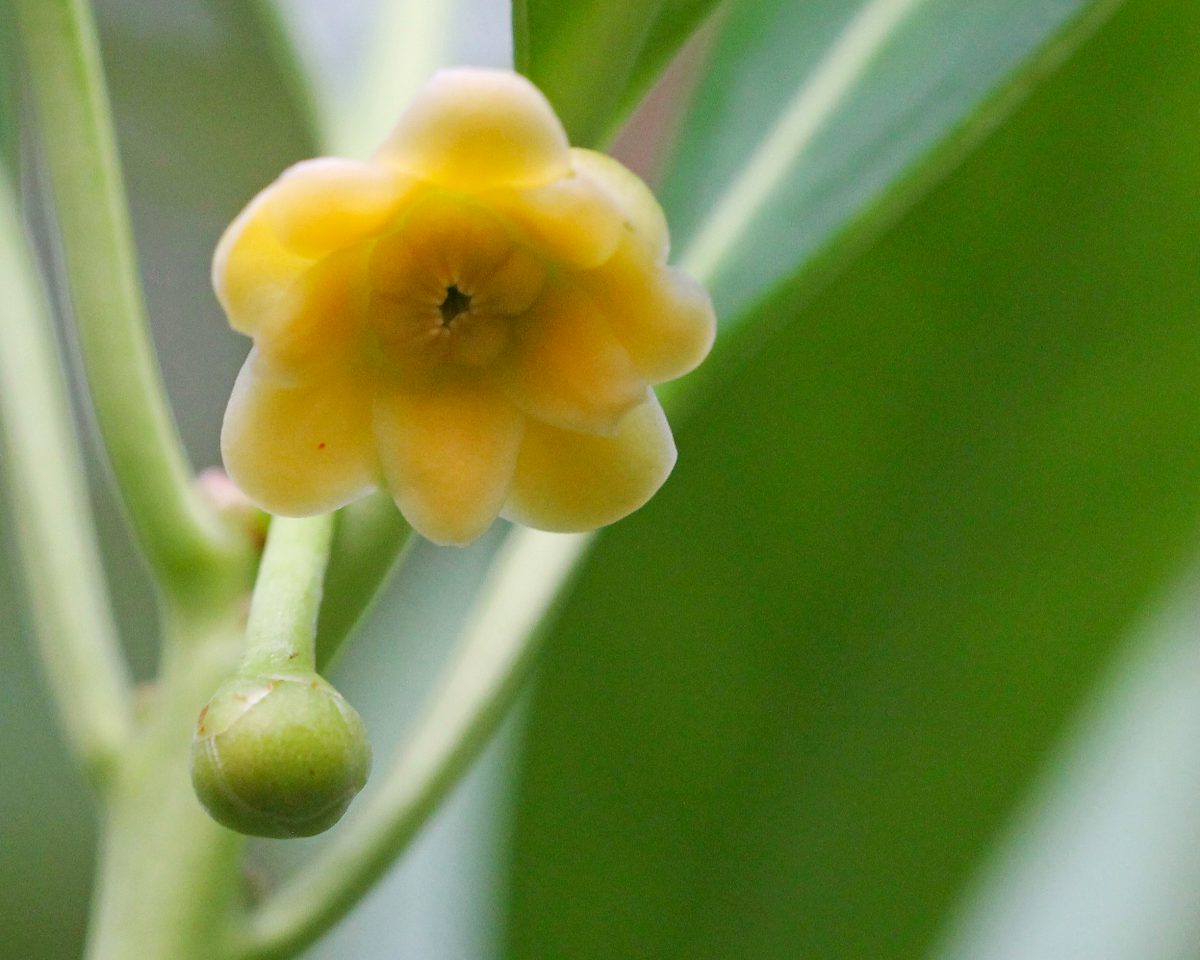Yellow anise
Pictured above: Yellow anise (Illicium parviflorum) by Scott Ward (CC BY-NC). Click on terms for botanical definitions. View post as a PDF.
Yellow anise (Illicium parviflorum) is an evergreen shrub to small tree found in mesic hammocks, bluffs, ravines and seepage swamps. It is endemic to only seven Central Florida counties. Its dense evergreen foliage provides cover for birds and other wildlife. Its lightly fragrant blooms appear in spring and summer. They are pollinated by small insects, particularly flies in the Diptera order.
Flowers are tiny (about ½-inch in diameter) with 12 to 15 greenish-yellow tepals. They are born on fleshy stalks. Leaves are up to 6 inches long, leathery and elliptic with blunt tips. Margins are generally entire but may be undulate. The leaf’s upper surface is dark green and smooth; the underside is flecked with pale glands. Leaf arrangement is alternate. Fruits are small green star-shaped capsules that turn brown and dehisce when mature, dispersing many seeds.
The entire plant — especially the leaves when crushed — emits an anise- or licorice-scented fragrance. It is related to the common spice Star anise (Illicium verum), but like many other anise species, including Florida anise (I. floridanum) of North Florida, the leaves and fruit may be toxic. The bark is a source of anise oil, and the roots may be used like sassafras.
The genus Illicium is from the Latin illicio, or “entice.” The species epithet parviflorum is from the Latin parvus, meaning “small,” and flös (flöris), or “flower.”
Family: Schisandraceae
Native range: Marion, Volusia, Seminole, Lake, Orange, Polk and Osceola counties
To see where natural populations of Yellow anise have been vouchered, visit florida.plantatlas.usf.edu.
Lifespan: Perennial
Soil: Rich, acidic, moist to moderately dry soils
Exposure: Partial to full shade
Growth habit: 10–20’ tall with crown spreading 5–10’+
Propagation: Cuttings, seed
Florida regions of landscape suitability: Central
Garden tips: Yellow anise can be pruned to any desired shape, making it great for a buffer, screen or hedge, or a specimen plant. Its foliage may thin out when grown in full shade. The plant is relatively pest-free but cannot tolerate salt or long periods of drought.
Yellow anise is available from nurseries that specialize in Florida native plants. Visit www.PlantRealFlorida.org to find a nursery in your area.
Learn more about Yellow anise from the Florida Native Plant Society and the Institute for Regional Conservation.


